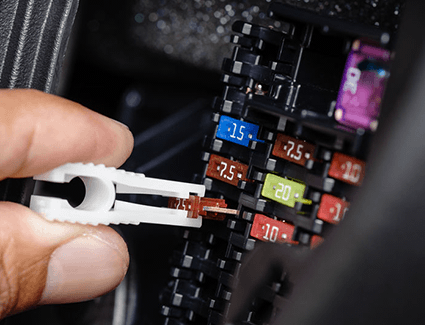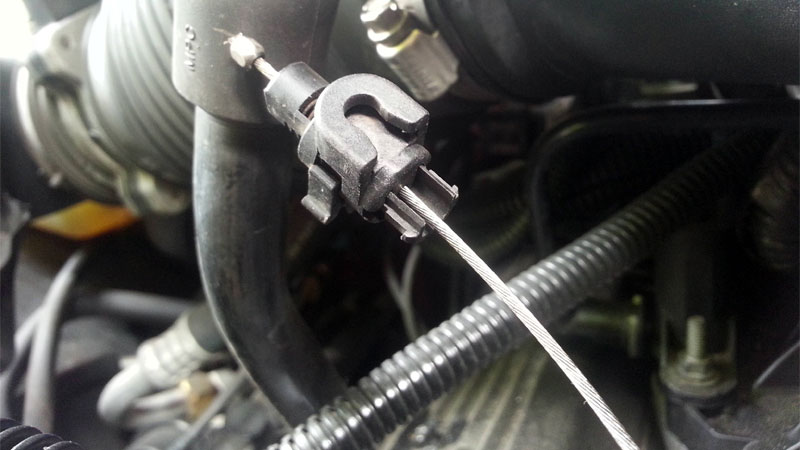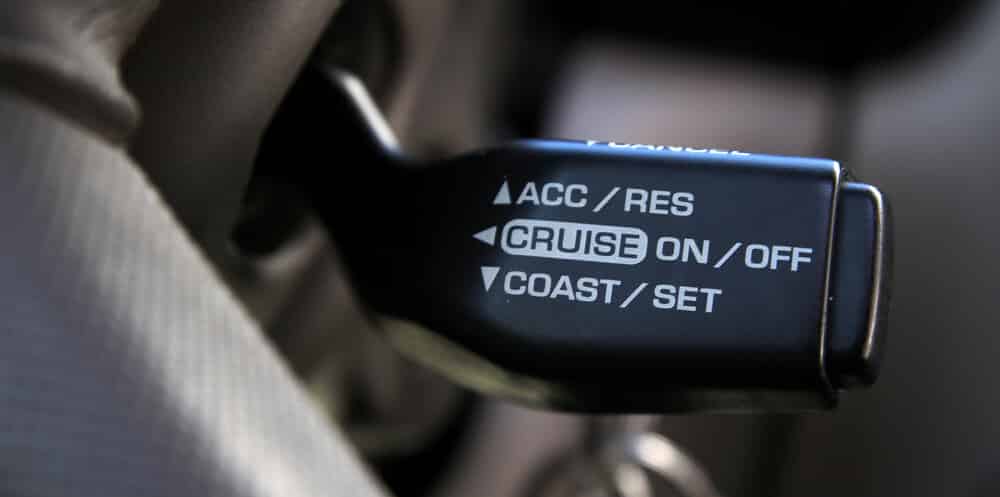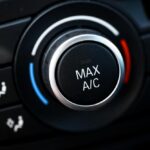One of the most underappreciated features in a car might be cruise control. Cruising down the highway makes a long journey so much more bearable. On long drives, cruise control helps drivers feel less stressed and tired, but if the system isn’t functioning properly, it could be dangerous. This article will explain what went wrong and how to fix it so that you can use your cruise control once more if it stopped functioning.
What Is Cruise Control?
In the 1950s, cruise control was first made available for automobiles. The time it took for it to become a standard feature in a modern vehicle, though, was considerable. When you are moving at a constant speed, you can use the cruise control feature.
With the aid of this electrical system, you are able to set a speed limit and depress the accelerator. Because you don’t have to try to keep your speed up while driving a long distance, you get tired less easily. Fuel economy is another advantage of using cruise control since a vehicle uses less fuel when moving steadily.
Adaptive cruise control, a smart technology, may be available in more recent automobiles. With the aid of sensors, adaptive cruise control helps you maintain a safe distance from the cars in front of you while still allowing you to travel at a set speed. With conventional cruise control, you have to take control when the car in front of you slows down, but not with adaptive cruise control. You may be interested in Does Cruise Control Save Gas?
How Does The Cruise Control Work?
Without the driver’s input, a vehicle’s speed can be maintained with the help of cruise control. When you want to engage cruise control, you first turn the system “On” with a button or switch. However, this does not activate the cruise control on its own. When you “Set” cruising speed, the cruise control module (CCM) keeps track of the current speed before controlling the throttle body to keep the vehicle moving. The CCM adjusts the throttle body opening in response to changes in vehicle speed (caused, for instance, by hills or the wind).
The CCM can keep your desired cruising speed on the highway by modulating engine speed. You can increase or decrease cruise speed by tapping a button or lever, and you can cancel cruise control by hitting the “Cancel” or “Off” buttons or stepping on the brake.
Control of the throttle body has evolved over time. Initially, vacuum motors and cables were used in systems, but eventually, electric motors took their place. Most recently, with the advent of drive-by-wire or electronic throttle control systems (ETCS), cruise control was integrated into the engine control module (ECM), which electronically controls the throttle body.
Simple cruise control systems still demand that the driver be aware of the traffic and road conditions as they change. Adaptive cruise control systems, sometimes called “smart” cruises, use radar or laser detection to maintain safe distances from vehicles ahead.
Some adaptive cruise control systems simply lower engine speed to maintain distance, but some of the newest adaptive cruise control systems can also apply the brakes to slow or stop the vehicle. Even with adaptive cruise control, it’s crucial that drivers keep their eyes on the road at all times.
Why Is My Cruise Control Not Working?
Damaged Mechanical Components

There is a possibility that the cruise control in your older vehicle is mechanical. Mechanical cruise control is a relatively simple system: a cable connects the throttle to a part known as the vacuum actuator. Depending on how the cruise control is configured, the actuator modifies the cable. The cruise control might not function if either component is broken, the vacuum actuator is leaking, or both are.
A Blown Fuse
If your cruise control system is electronically controlled, it will have an associated fuse. The fuse will blow if there is an electrical issue to prevent harm to another wiring. Try replacing the fuse. The cruise control will continue to function if the issue is resolved, which is fantastic! You may need to address more serious electrical issues if the fuse blows once more.
Damaged Speed Sensor
Can you guess what your Toyota’s speed sensor does? Yes, it detects speed—more specifically, the speed at which your car is moving. A damaged speed sensor may cause the cruise control not to work properly due to inaccurate readings. Speed sensors should be repaired right away because they can become damaged and lead to issues with the speedometer.
Faulty Brake Pedal Switch
The brake lights come on when you press the brake pedal. It’s because of the switch on the brake pedal. In addition to causing trouble with the brake lights, a broken brake pedal switch can also cause the cruise control to stop working. Consider what occurs when you step on the brakes while the cruise control is engaged to understand how. It turns off automatically, giving you back control over manual operations.
If the switch is broken, your car won’t let the cruise control turn on because it will believe the brake pedal is constantly being depressed. This can be dangerous as well as inconvenient. Drivers will need to know when you are braking and when you are not, after all.
Electrical Issues
The electronic cruise control system is made up of numerous electronic parts that work together to make the system function. You should inspect the wiring harness and related connectors for a problem if the cruise control stops functioning.
Additionally, make sure that the voltage source is giving the system enough power. Cruise control issues can result from even the smallest error. Many times, there can be a problem with the cruise control lever or buttons that prevent the cruise control from working.
If the buttons for your cruise control are on the steering wheel, the problem may also be the result of a broken clock spring that is located behind the wheel.
ABS Sensor Faults
The cruise control system won’t work if any of the ABS sensors (there should be one on each wheel) are bad.
Spiral Cable Fault
The spiral cable links the cruise control activation button and electrical circuits in the steering column to the components in the steering wheel. Switch and CCM communication may be hampered by an open circuit in the spiral cable.
Damaged Vacuum Actuator, Hoses, Or Cable (Older Cruise Control)
If your vehicle has cruise control, it’s possible that the vacuum actuator or the cable that connects to the throttle is broken. The cruise control will not function at all if the vacuum hoses or the actuator have sustained damage.
Furthermore, the actuator-to-throttle cable must be in good condition. The cruise control won’t work if it’s been damaged.
Bad Throttle Body
In contemporary automobiles, the electronic throttle control opens the throttle body when the accelerator is depressed. Similarly, when a designated speed is set on the cruise control, it will send signals to the electronic throttle control to control the throttle body.

The throttle body is prone to getting dirty, which makes it more difficult to open and/or limits how much it opens. If that’s the case, there’s a good chance the cruise control won’t function. Of course, not using the cruise control will restrict your driving because the throttle is broken.
Returning to the electronics, it’s also possible that the electronic throttle control needs to be replaced because it’s broken.
Check Engine Light
If there is an issue with the engine or transmission, some contemporary cars, especially those with ETCS, may disable the cruise control.
How Can Cruise Control Be Fixed?
If the problem is isolated, meaning no other symptoms except for the cruise control not working, the problem is most likely due to a blown fuse. Other symptoms, such as broken brake lights, can result from issues like a bad brake pedal switch. The performance of the cruise control can thus be impacted by any issue in the vehicle.
Cruise Control Repair Cost
Depending on what went wrong, your cruise control system may need to be repaired. A cruise control or brake switch replacement could cost between $125 and $350, parts and labor included. However, changing a fuse only costs a few dollars, and it takes a few seconds to do it yourself.
On the other hand, a major failure, like the actuator, could result in a much higher repair bill. An actuator for the cruise control can cost upwards of $700 to replace in some vehicles. If you drive a luxury vehicle or one that is challenging to find parts for, these costs increase.
Although fixing the broken cruise control may not seem urgent for you, it can have an impact on other performance facets. Acceleration problems or problems with the speedometer might start to appear. The cruise control should always be fixed as soon as a problem is discovered to be safe.
Conclusions
The cruise control uses various sensors and parts to work and keep you cruising comfortably while improving your gas mileage. Avoid using your cruise control until it has been fixed if it isn’t functioning properly. A defective cruise control system might not stop when you want it to, posing a risk to your safety and the safety of those around you.
Take your car to a reputable mechanic for a checkup, a few diagnostics, and repairs after evaluating your cruise control on your own.



